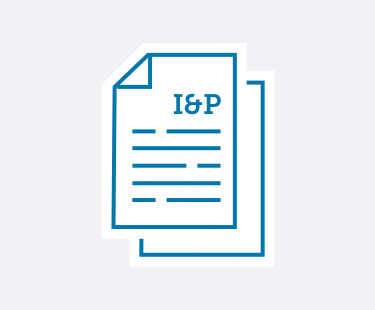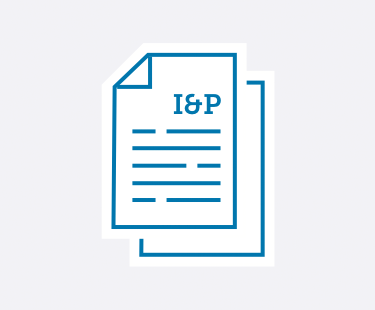

Learn practical strategies to handle emerging trends and leadership challenges in private schools.
No matter if you’re a School Head, Admission Director, Development Director, Board member, or any other private school administrator—Ideas & Perspectives, ISM’s premier private school publication, has strategic solutions for the pervasive problems you face.
- Tuition not keeping pace with your expenses? In I&P, explore how to use strategic financial planning to create your budget and appropriately adjust your tuition.
- Enrollment dropping off? Discover how to implement the right admission and enrollment management strategies that engage your community—and fill your classrooms.
- Trouble retaining teachers? Learn how you can best support your teachers using ISM’s Comprehensive Faculty Development framework. Your faculty members will become more enthusiastic about their roles—which ultimately improves student outcomes.
- Fundraising campaigns not as successful as you’d hoped? Implement ISM’s practical advice and guidance to build a thriving annual fund, construct an effective capital campaign, and secure major donors—no matter your community size or location.
- Not sure how to provide professional development—for you and your staff? Learn ways to develop and fund a successful professional development strategy. You can improve teacher-centered satisfaction and growth, which in turn strengthens student-centered learning.
- Problematic schedule? You can master the challenges of scheduling with the help of ISM’s practical advice, based on our experience with hundreds of schools and our time-tested theories.
- And so much more.
I&P has shared targeted research, up-to-date insight, and sound theory with school leaders since 1975. More than 8,500 private school decision-makers find the answers to their schools’ administrative and governance matters in our advisory letter. We give you the strategic answers you need.
As an ISM Silver or Gold member, you not only receive issues online and in print 10 times a year, but you have access to more than 600 articles in our web archive. Need help? It’s at your fingertips! Learn more and sign up for ISM's membership here.
Search
See the articles from our latest issue of Ideas & Perspectives.
The Admission Funnel: Interview Tactics
Volume 33 No. 1 // January 17, 2008
A critical step in the admission funnel process occurs when students are screened to ensure they are mission-appropriate. Most private-independent schools include multiple activities in the screening process—the older the student, the more screening activities are required because there is more information available. Typically, schools want to see past grades, achievement test results, and teacher recommendations, among other information. Many schools require the student to visit the campus for a partial or full day. During these visits, interviews of the student and parents are often scheduled with the Admission Director or an Admission Officer. Certainly students applying for the upper elementary grades and the middle or upper schools will be interviewed—even if those families already have children in the school.
1. Already a member? Click here to login.
2. Not a member? Click here to become a member.
3. Not sure? We'll help you figure it out.
An Annotated Teacher Contract - ISM Model
Volume 33 No. 1 // January 17, 2008
ISM recommends that private-independent schools provide one-year contracts to faculty members to: support and enhance the faculty culture by providing employment safety and security to faculty for the academic year; and maximize continuity of instruction for students by creating a mutual obligation between the school and the member, reducing the potential for disruptive mid-year faculty departures.
1. Already a member? Click here to login.
2. Not a member? Click here to become a member.
3. Not sure? We'll help you figure it out.
Building Your Faculty's Characteristics of Professional Excellence
Volume 32 No. 16 // December 27, 2007
ISM has suggested that conventional thinking about private-independent school mission statements should be revisited. School leaders, caught between the need to craft an (1) inspirational, (2) compelling, and (3) marketing-effective statement, on the one hand, and a (4) comprehensive, (5) actionable, and (6) outcome explicit statement, on the other, have too often found the result unsatisfactory. The commonly experienced result has been a 30-word mission statement that attempts all of the above, thereby appearing cluttered, confused, and sometimes (necessarily) similar to those of competing schools.
1. Already a member? Click here to login.
2. Not a member? Click here to become a member.
3. Not sure? We'll help you figure it out.
Your Strategic Plan and Projected Enrollment Growth
Volume 32 No. 16 // December 27, 2007
ISM’s recommended 13-line strategic financial plan model has been in widespread use for some time. This short, six-year (i.e., displayed in six columns) expression of your strategic plan comprises a one-page attachment to the plan itself and represents the quantitative expression of that plan. The great virtue of the 13-line model is that it allows Board members who are not mathematically inclined or have little financial expertise—often either a majority or a substantial minority—to understand the financial ramifications of the positions they take on strategic issues.
1. Already a member? Click here to login.
2. Not a member? Click here to become a member.
3. Not sure? We'll help you figure it out.
The 2007 Development Director Survey: Salaries
Volume 32 No. 15 // November 30, 2007
ISM surveyed a random sample of Development Directors from our I&P subscriber schools; 157 responded (139 full-time and 18 part-time).1 This article reports on the responses of the 139 full-time Directors. Based on this survey, this article focuses on their satisfaction with their compensation and the competition that private-independent schools face in hiring and retaining Development Directors.
1. Already a member? Click here to login.
2. Not a member? Click here to become a member.
3. Not sure? We'll help you figure it out.
Portrait of the Graduate—Moving from Division to Division
Volume 32 No. 15 // November 30, 2007
The Portrait of the Graduate is one of three definitive documents (including the school’s mission statement and the Characteristics of Professional Excellence) that capture a school’s core reason for existence. This portrait was defined as “a list of five or fewer items comprising short descriptors of your product—the student you expect to have developed over the years that she/he has spent under your faculty’s tutelage.”
1. Already a member? Click here to login.
2. Not a member? Click here to become a member.
3. Not sure? We'll help you figure it out.
Continuous Planning: Its Relevance to Private-Independent Schools
Volume 32 No. 14 // November 8, 2007
“In my business, we do continuous planning. Planning never ends. We never stop examining our market, making adjustments, and, when appropriate, instituting major changes. Should private-independent schools really be any different?”
1. Already a member? Click here to login.
2. Not a member? Click here to become a member.
3. Not sure? We'll help you figure it out.
Action Research: A Multi-Faceted Tool
Volume 32 No. 14 // November 8, 2007
Action research is a systematic process of inquiry undertaken by school practitioners in their own schools. It uses the techniques of research to help teachers examine their own educational practices, then takes steps to improve education in the very place where the research is carried out. Teachers become more effective when they are encouraged to examine and assess their own work, and then develop ways of improving their own teaching skills.
1. Already a member? Click here to login.
2. Not a member? Click here to become a member.
3. Not sure? We'll help you figure it out.
IRS Code 409A and Faculty Compensation
Volume 32 No. 14 // November 8, 2007
Section 409A of the tax code (which generally deals with tax-deferred compensation issues) was enacted in October 2004.1 This did not directly impact schools until final regulations were issued in April 2007. The final regulations generally are applicable for taxable years beginning on or after January 1, 2008. However, for school years beginning in 2007 and ending in 2008, schools that offer elections to annualize compensation must have set forth in writing, by December 31, 2007, how employees are to be paid for the rest of the of the current school year. For 2008-09 and later school years, schools will need to meet the requirements explained below.
1. Already a member? Click here to login.
2. Not a member? Click here to become a member.
3. Not sure? We'll help you figure it out.
The Deferred Maintenance Account
Volume 32 No. 13 // October 16, 2007
Your school may have limited or no cash reserves. The Board, Head, and Management Team understand that your buildings are depreciating, and a depreciation line in your school’s budget reflects this. A 1997 report, “A Foundation to Uphold,” identified $26 billion of deferred maintenance for institutions of higher education nationally. (This included $6 billion of urgent needs.) While ISM knows of no similar study for private-independent schools, ISM Consultants have visited many schools where a deferred maintenance backlog exists.
1. Already a member? Click here to login.
2. Not a member? Click here to become a member.
3. Not sure? We'll help you figure it out.


